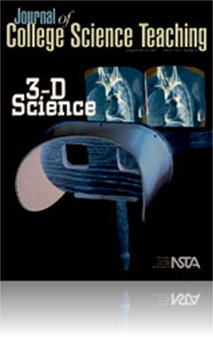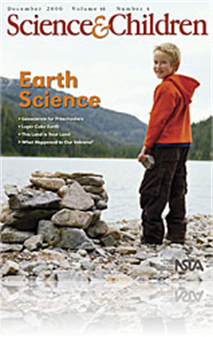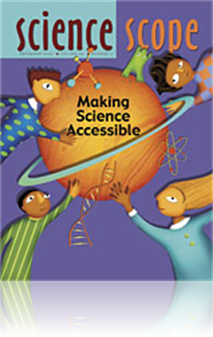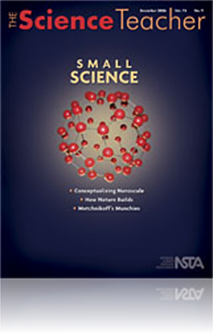All Resources
Journal Article
Teaching Anatomy and Physiology Using Computer-Based, Stereoscopic Images
Learning real three-dimensional (3D) anatomy for the first time can be challenging. Two dimensional drawings and plastic models tend to over-simplify the complexity of anatomy. The approach described uses stereoscopy to create 3D images of the proces...
Journal Article
Methods and Strategies: Science Homework Overhaul
Do your students groan when you announce a homework assignment? Do they have so much math and language arts homework that they just don’t have time for science homework? Does the homework you give help students to better understand key science conc...
Journal Article
Tech Trek: The size of things to come
While using photos and illustrative images for teaching purposes is very appealing, you are likely to find that digital images of any kind take up a lot of storage space. In fact, many of the technological enterprises that teachers undertake are stor...
Journal Article
Editor's Roundtable: Leveling the playing field
Special education has evolved from separate classroom settings, to pull-out programs, to mainstreaming, to the current practice of full inclusion. Inclusion involves many more regular education teachers than did previous special education programs. I...
Journal Article
Personal Care Chemistry as a Bridge to Careers in Science and Technology
This activity in personal care chemistry seeks to provide middle school girls with an opportunity to learn firsthand about science and engineering technology. The activities--the preparation of lip balm and hand lotion--are fun, easy to do, and they ...
Journal Article
Science Sampler: Success for all is just a heartbeat away
To unlock student understanding and enable a large percentage of the class to successfully complete a full range of inquiry activities, try using the differentiated instruction approach described in this article. Students of varying levels will thriv...
Journal Article
Scope on Safety: Collaborating safely
With the advent of inclusion legislation such as the Individuals with Disabilities Education Act (IDEA) or PL 105-17 Reauthorization Action of 1997, many schools have focused on teaching partnerships between regular education and special education te...
Journal Article
Scope on the Skies: The real shape of the Moon's orbit
In the typical Moon phase lesson, students learn that the rotation period for the Moon is approximately the same as its revolution period around the Earth. However, as your students complete the following activity, they will discover that the Moon's ...
Journal Article
Editor’s Corner: Small Science
We know that nanotechnology offers real possibilities. It already appears in commercial products such as computers, sunscreens, high-performance sporting equipment, and stain-resistant fabrics. The evolution from vacuum tubes to transistors and high-...
Journal Article
The National Center for Learning and Teaching Nanotechnology (NCLT) based at Northwestern University is developing “nanoconcept” materials to bring nanoscience into the classroom. These materials center around key new concepts in nanoscience, inc...
Journal Article
Science Shorts: Nothing But Blue Skies
Why is the sky blue? Why are sunsets orange and red? These are some of children’s favorite questions to ask, but answering them at a level appropriate for primary students’ level of understanding can be tricky, even for veteran teachers. In order...
Journal Article
Fats, Oils, and Colors of Nanoscale Materials
Phase changes and intermolecular forces are important physical science concepts but are not always easy to present in an active learning format. This article presents several interactive activities in which students plot the melting points of some fa...
Journal Article
Science Sampler: Mail time! Addressing student questions in science class
How can you encourage students to question and explore their day-to-day encounters with science and still get through the curriculum for the year? At a local hardware store--you'll discover the solution--a big metal mailbox. It has all the trimmings:...
Journal Article
That a relatively small piece of writing such as Albert Einstein's three-page paper of relativity could be so important certainly illustrates the significance of writing to science. A science class is not complete unless it helps students learn to th...






